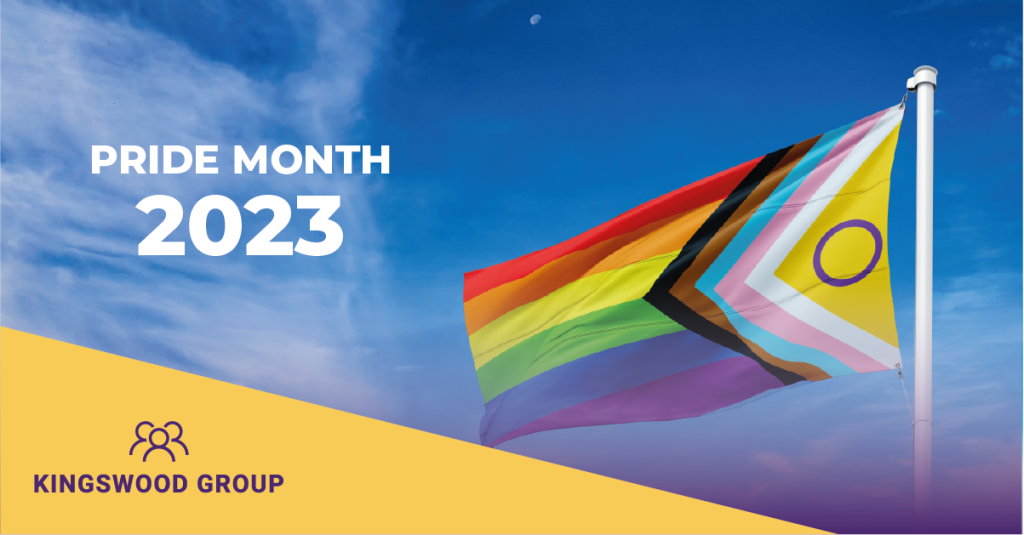
Human Resources (HR) plays a crucial role in fostering an inclusive and diverse workplace, including supporting and promoting LGBTQ+ (Lesbian, Gay, Bisexual, Transgender, Queer/Questioning, and others) rights and inclusivity.
Pride, often referred to as LGBTQ+ Pride or Pride Month, is an annual celebration held throughout June in recognition of the LGBTQ+ community’s history, achievements, and ongoing commitment to equality.
The HR community can actively engage in promoting LGBTQ+ inclusion in the workplace by implementing various initiatives and practices, such as:
1.Developing inclusive and diverse workplace policies
HR can create policies that prohibit discrimination based on sexual orientation, gender identity, or gender expression. These policies can also address issues such as harassment and bullying, ensuring a safe and inclusive environment for all employees.
2. Providing LGBTQ+ sensitivity training
HR can organise training sessions or workshops to educate employees about LGBTQ+ issues, terminology, and the importance of fostering an inclusive workplace. This training can help create awareness, empathy, and respect among employees.
3.Implementing diversity and inclusion programmes
HR can collaborate with leadership to develop and support diversity and inclusion initiatives that specifically address LGBTQ+ inclusion. This may involve forming LGBTQ+ employee resource groups, providing mentorship opportunities, or organising LGBTQ+ awareness events.
4.Reviewing benefits and policies
HR can review employee benefits and policies to ensure they are inclusive and supportive of LGBTQ+ individuals. This might involve offering domestic partner benefits, gender-neutral restroom policies, or accommodating transition-related healthcare needs.
5.Supporting employee resource groups
HR can actively support and collaborate with LGBTQ+ employee resource groups, providing resources, assistance, and guidance to help these groups foster inclusivity and organise events or activities.
6.Ensuring inclusive recruitment and hiring practices
HR can work towards eliminating bias in recruitment and hiring processes, ensuring that LGBTQ+ candidates are given equal opportunities. This might involve reviewing job descriptions, using inclusive language, and training hiring managers on fair and unbiased recruitment and selection techniques.
By actively engaging with Pride initiatives and incorporating LGBTQ+ inclusive and diverse workplace policies in their practices, HR can contribute to building diverse, inclusive, and supportive workplaces where all employees can thrive and be their authentic selves.
What are the benefits of a diverse and inclusive workplace?
A diverse and inclusive workplace offers numerous benefits, both for individuals and organisations as a whole. Here are some key advantages:
1. Enhanced creativity and innovation:
When you bring together individuals from diverse backgrounds, perspectives, and experiences, you create a rich environment for collaboration and idea generation. Diverse teams are more likely to come up with innovative solutions, as they can draw upon a wider range of knowledge and insights.
2. Improved decision-making:
Inclusive teams tend to make better decisions. By incorporating diverse perspectives, they can identify potential biases, challenge assumptions, and consider a broader range of factors. This leads to more balanced and informed decision-making processes.
3. Increased adaptability and problem-solving:
In a rapidly changing world, adaptability is crucial. Diverse teams are often more flexible and better equipped to handle unexpected challenges. They can draw upon their diverse skills, experiences, and knowledge to find creative solutions and navigate complex problems.
4. Broader talent pool:
Fostering diversity and inclusion helps organizations attract and retain a wider range of talented individuals. By promoting inclusivity, companies can tap into previously untapped talent pools, including individuals from different genders, races, ethnicities, backgrounds, and abilities. This widens the talent pool and allows for a more diverse and skilled workforce.
5. Enhanced employee engagement and satisfaction:
When employees feel included, respected, and valued, they are more engaged and satisfied in their work. Inclusive workplaces foster a sense of belonging and create an environment where individuals can bring their authentic selves to work. This leads to higher levels of employee morale, motivation, and productivity.
6. Improved customer understanding and satisfaction:
Diversity and inclusion enable organisations to better understand and connect with diverse customer bases. By having employees who reflect the diversity of their customer demographics, companies can gain valuable insights, anticipate customer needs, and tailor their products and services more effectively.
7. Better reputation and competitiveness:
Organisations that prioritise diversity and inclusion tend to have a positive reputation and are seen as socially responsible. This can attract customers, clients, and investors who value diversity and are more likely to support businesses that embrace inclusive practices. Additionally, diverse teams can provide a competitive edge by bringing unique perspectives and market insights.
It’s important to note that achieving diversity and inclusion requires ongoing effort, including fostering a culture of respect, providing equal opportunities, and addressing systemic barriers. However, the benefits of a diverse and inclusive workplace make it a worthwhile endeavor for organisations seeking to thrive in today’s diverse and globalised world.